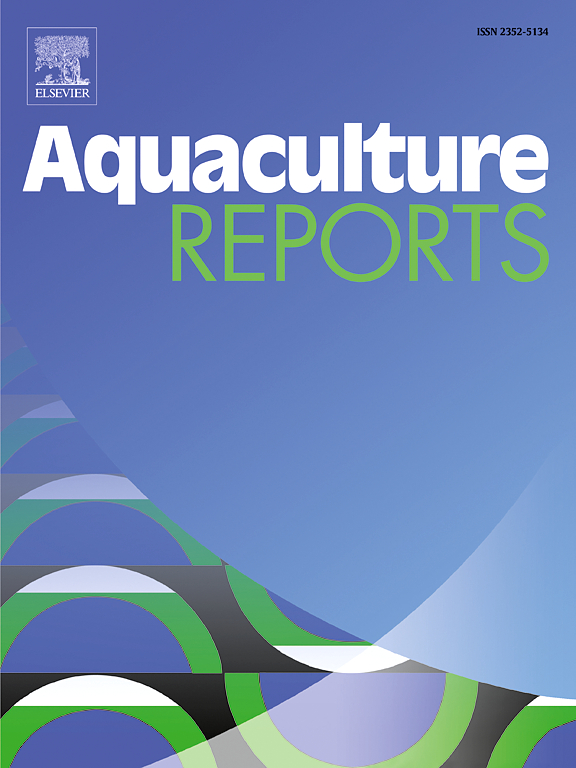Effects of dietary Spirulina platensis supplementation on growth performance, whole body composition, antioxidant activity, histological alterations, and resistance to Vibrio parahaemolyticus in Pacific white shrimp, Litopenaeus vannamei
IF 3.2
2区 农林科学
Q1 FISHERIES
引用次数: 0
Abstract
Spirulina platensis has been extensively studied from its economic significance. It is also used as a feed additive in aquafeeds, where it serves as a growth promoter and immune stimulant. The genus S. platensis recognize for its high protein content, carotenoid, phycocyanin and phytochemicals content, which can help mitigate challenges in the aquaculture industry challenges such as disease outbreaks, pathogen infection and ultimately contributing to aquaculture sustainability. In this context, an eight-week feeding experiment was conducted to investigate the potential effects of dietary S. platensis (SP) on feed utilization, growth performance, antioxidant activity, and muscle and hepatopancreatic histology of Litopenaeus vannamei challenged with Vibrio parahaemolyticus. A total of 300 shrimps were included in this experiment. Shrimp were fed diets enriched with 2 g/kg (T1), 4 g/kg (T2), 6 g/kg (T3), and 8 g/kg (T4) of SP with the control group (T0) being fed a basal diet. The results showed that shrimp fed diets supplemented with 4, 6, or 8 g/kg SP exhibited significant improvements in the final body weight, weight gain, specific growth rate, feed conversion ratio, and survival rate (P ≤ 0.05). Shrimp in the T3 and T4 groups exhibited significantly lower malondialdehyde activity (P ≤ 0.05) compared to the other groups. All SP-supplemented groups resulted in higher levels of GPx, SOD, and CAT compared to the T0 group (P < 0.05). Feeding shrimp diets supplemented with 8 g of SP resulted in the highest crude protein and ash content, with significantly lower crude lipid levels in the whole body of shrimp (P < 0.05). Shrimp fed 8 g/kg of SP showed the highest survival rate (P ≤ 0.05) against V. parahaemolyticus. Including SP in shrimp diets, especially at 6 and 8 g/kg levels, improved the histological profile of muscle and hepatopancreatic tissues. Overall, the present study highlights the potential impact of S. platensis in shrimp diet by showing significant improvements in growth, antioxidant capacity, histological changes and resistance to against V. parahaemolyticus Thus, S. platensis can be recommended as a beneficial feed supplement for the shrimp industry.
求助全文
约1分钟内获得全文
求助全文
来源期刊

Aquaculture Reports
Agricultural and Biological Sciences-Animal Science and Zoology
CiteScore
5.90
自引率
8.10%
发文量
469
审稿时长
77 days
期刊介绍:
Aquaculture Reports will publish original research papers and reviews documenting outstanding science with a regional context and focus, answering the need for high quality information on novel species, systems and regions in emerging areas of aquaculture research and development, such as integrated multi-trophic aquaculture, urban aquaculture, ornamental, unfed aquaculture, offshore aquaculture and others. Papers having industry research as priority and encompassing product development research or current industry practice are encouraged.
 求助内容:
求助内容: 应助结果提醒方式:
应助结果提醒方式:


